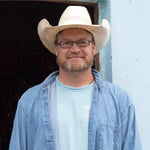Lost in the Mountains of Guatemala
February 9, 2020

Pana Jachel, Guatemala, 2016
A few years ago, after my first Giving Trip, we posted an article, that still gives me goose bumps, called I've Not Yet Come Down From That Mountain.
It was about the profound effect that trip to the poor villages of Mexico, and the people we worked with, had on me.
It was hard to believe that donkeys, horses and mules, just like these, helped build America’s infrastructure.
Their valuable contribution to our own societal evolution has been largely forgotten. Now horses are mainly used for pleasure and sport.
Not only were they once used as our main source of transportation, they helped build the future of transportation. Without them there very well may be no railroads, bridges or roads.
They helped to raise buildings, drag lumber and even carry children to school.
Seeing their immense value first-hand in these villages is a powerful experience. It really brings it all home.
Today's Working Horse
Around me, the surrounding landscape crawls with workers hoeing fields and horses loaded heavy with corn, wood or sacks of coffee beans.
Inside the villages, every courtyard has one or two small horses standing tethered.
If they are lucky, they might be chewing on a stalk of corn - not enough nutritional value or energy for the hard work they do. It’s unlikely their owners even know this and even if they did, because of their limited economic resources, that is all they are going to get.
On our final workday, I am standing in a grassy field on the slopes of the mountain watching our incredible team bustle around worming, vaccinating, trimming feet, floating teeth and ducking the occasional wild hoof and all i can do is smile.
Dr. Rob Franklin leans casually over to inspect a downed horse that Dr. Chris Brasmer has just successfully neutered.

A young stud horse disrupts the camp, kicking and screaming at the waiting horses. Concho takes the lead rope from the frightened owner and quickly gains dominance, settling the unruly horse. He beckons the crowd of farmers to gather so he can teach them techniques of how to control their animals without force or harm. They watch with skepticism but in a few minutes they laugh and poke when they see how Concho has transformed the wildest of the band.

Dr. Ashlee Brown calmly explains to the owners of an emaciated, bay pony what the affects will be from the vaccination shots and dewormer she and Dr. Lisa Fultz are about to administer to their work horse. Lisa frets at the horse’s open wound, rubbed raw from an ill-fitting saddle.



Michael Pintar and Dr. Luis Morales prepare a dental headset on a bony gray mare. Dr. Cal Davis demonstrates how the jagged, cutting teeth cause pain when she chews by having the owner reach deep into the mouth and rub the sharp edges - his eyes widen at the discovery that his horse actually has molars.


We use soccer fields for this work because the playing field provides a large, flat area to work in a country with little in the way of flat open space, and the goal posts are perfect for hanging the dental headsets.
Dr. Keith Latson, with the help of Dr. Jaqueline Garabito's son Lisandro, engage with the village children and begin to kick the soccer balls, sorry, FUTBOLS, that we have brought to give out along with coloring books that show them proper care for horses and donkeys.


Our work here is winding down for this trip and I have to be honest with myself… what we are doing for these animals in this little mountain town in Guatemala is not going to move the world. It’s not going to fix the immense problems we see or change this culture’s behavior.

But. Then again. It just might...
Thanks to Michael Pintar Photography for the awesome Pics!
Watch the Slideshow...

